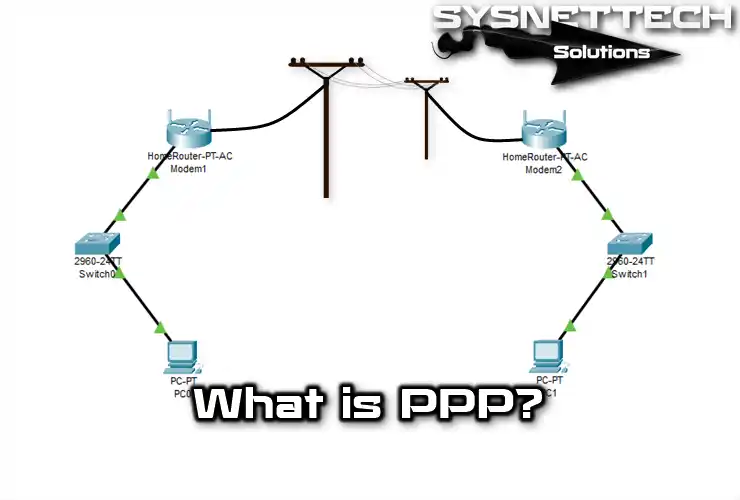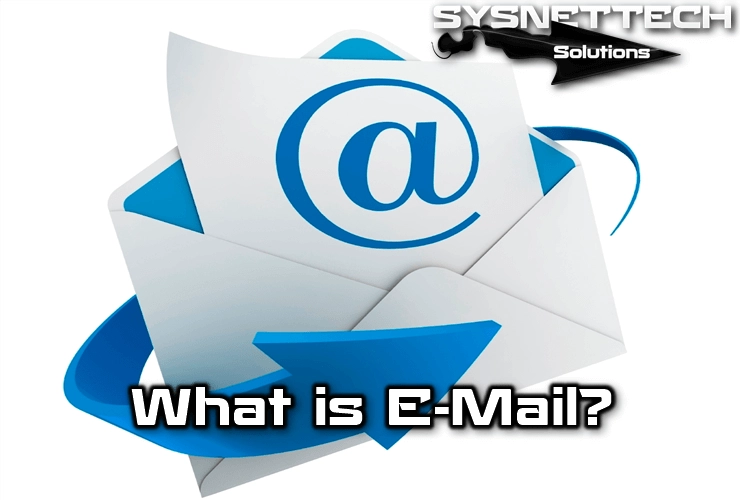PPP (Point-to-Point Protocol) is how computers talk and share data in networks. This protocol begins sessions by creating a secure link between ISPs and users. So this lets home users connect to the Internet.

What is the PPP Protocol in Networking, and What Exactly Does It Do?
The PPP protocol partners up with TCP/IP. Plus, it handles communication at the link layer between two PCs.
Specifically, it lets you connect to your service provider and set up the web link using a modem. Broadband connections such as PPPoE or PPPoA are used to accomplish this.
PPP has authentication and dynamic IP address assignment functions. It’s not just about transferring data; it does more. So, it doesn’t hand out IP addresses that ISPs gave to clients to all devices on the remote network.
Thus, users get an IP address when they connect to the ISP. As a result, the IP address they receive is valid until the PPP connection ends.
PPP History
William Simpson began developing PPP in the late 1980s. It became one of the most common protocols used for Internet access at that time. One of its most basic purposes was to provide Internet access to users.
Therefore, William designed PPP in detail to meet this need. And so it released its first version in 1990.
This protocol, accepted in the 1990s, became preferred by ISPs. As a result, they offered their users access to the Internet with PPP connections.
In the 2000s, users continued to use the PPP protocol. But it had to adapt to newer tech. In particular, when web speeds increase, technologies such as ADSL are developed. In this way, they have also created versions compatible with such connections.
As a result, it provides data transfer over various contact lines. It is flexible and suitable for a wide range of apps.
Today, people use the PPP in DSL and Fiber connection tech. People in modern times do it this way.
PPP Features
PPP is important because it is reliable, supports many protocols, has authentication, and helps detect errors. Also, these are its key features.
- Point-to-Point Connection
PPP works between two specific devices, ensuring a direct line of contact. In this case, it sends data securely and quickly. This is why they favor it, especially in telecom and web access.
- Multiple Protocol Support
It works in harmony with different protocols. Among them, it works compatible with TCP/IP, IPv6, and IPX/SPX. This makes it easy to integrate into various networks and systems.
- Authentication
They allow the users they want to access a particular network with confirmation. In this case, only approved persons have access to it.
- Error Detection and Correction
When two devices are far apart, they send information to each other, find mistakes, and fix them. They also send the data again and make sure they connect correctly.
- Security
It’s essential to make sure user data is sent securely over the net. That’s why PPP is significant for LAN connections like VPN, where it works professionally to keep things safe.
- Flexibility
It works well with things like Ethernet, modems, or serial connections. Also, this helps them connect easily to many devices.
- Session Management
Another of PPP’s active roles is session management. With this feature, it starts, ends, or resumes sessions.
- Internet Connections
For easy Web access, PPP is great for everyone. It works with cable, DSL, or dial-up connections.
What Are PPP Components?
This protocol has three main components. These:
- Frame Structure
- LCP
- NCP
It employs a framing method like HDLC. This wraps data securely and checks for errors.
Also, it uses LCP (Link Control Protocol) for setup. This helps set up, configure, and test the data link.
As a result, it sets up network protocols using NCP (Network Control Protocol).
How Does PPP Work?
You can learn how PPP works sequentially. So you can understand how it secures data transmission in the network.
Step 1: Physical Connection
During the initial connection phase, first create a physical link. This link connects the remote device to the server. Also, this link ensures seamless data transfer.
Step 2: Framing
In the second stage, PPP packages the data into frames while marking the beginning and end. It also includes ways to divide and arrange the data.
Step 3: Link Control Protocol (LCP)
The third step configures contact line details using the LCP protocol. Then, it starts the session and manages the data processing.
Step 4: Authentication
Step four checks if the user can access the server. It chooses an authentication method and sends it to the server. This allows the user to connect to the server.
Step 5: NCP (Network Control Protocol)
In the fifth step, NCP decides which network layer to use for data transfer. This protocol can choose TCP/IP, IPv6, or IPX/SPX.
Step 6: Data Transmission
The sixth step starts the link after setting up everything required. Also, it employs a framing way to achieve its objective during this process.
Step 7: Connection Termination
In the final stage, it wraps up the communication. However, if PPP ends the connection, it does so in this step.
PPP Advantages and Disadvantages
Let’s consider some of the pros and cons of this protocol:
Advantages
- Reliable Communication: First, it authenticates users. Then, it fixes potential errors. As a result, it guarantees sending in a healthier way.
- Security: Provides strong encryption on commonly used network types such as VPN.
- Protocol Support: It facilitates the connection between systems by supporting many types of communication in complex networks.
- Flexibility: It works with Ethernet devices. Also, it works with modem devices.
- Error Detection: Its main job is to detect potential mistakes between the user and the remote server. This happens during the check process.
Disadvantages
- Connection: It helps one-on-one networks but doesn’t work for many links.
- Performance: There is a slight advantage when sending big files.
- Installation and Management: Setting it up can be more complex than other protocols.
- Cost: Installation costs may be higher than others. As a result, advanced devices and methods are required.
How do you make an Internet connection with PPP?
Setting up an Internet connection with PPP is easy. Home users can find these details right on their modem interfaces.
To access the web, you need a compatible modem. After setting it up, choose a method to confirm ISP information. Options include PPPoE and PPPoA for this stage.
Of course, remember that these protocols might vary depending on your Internet Service Provider.
After choosing the protocol provided to you, you need the username and password from your ISP for the Internet connection. Next, you need to enter the configuration interface of your modem or device. You will have access to the web after entering this information on your device.
In addition, check the DNS (Domain Name System) and IP address settings on your device. After that, check that DHCP can automatically distribute addresses to your local network.
After you have completed all these things, open a web browser on your PC and check your Internet connection. If everything works well, then you can make your current security settings.
As a recommendation, create a strong password for your modem’s admin accounts. This helps ensure better safety. Also, you can improve web security by regularly updating the software on your device.
What are PPPoE and PPPoA Concepts?
There are two types of communication protocols used according to the connection types. These;
- PPPoE (Point-to-Point Protocol over Ethernet)
- PPPoA (Point-to-Point Protocol over ATM)
They usually use these two methods in links, such as DSL (Digital Subscriber Line). Internet service providers also serve their clients in this way.
1. PPPoE (Point-to-Point Protocol over Ethernet)
The most widely used in Ethernet-based structures is PPPoE. In particular, they prefer DSL connection types. This form of connection offers flexibility and better network control.
The features of PPPoE:
- Authentication: Provides a username and password to connect users to the net. Thus, people have to enter the data they receive from their ISP.
- Encryption: These connections encrypt data and increase transfer privacy and security.
- Broad Area of Use: Provides connection support to home and workplaces. It also keeps devices such as DSL.
- Dynamic IP: Users usually get dynamic IP addresses with PPPoE. Thus, they get a new address each time they turn the modem on and off.
2. PPPoA (Point-to-Point Protocol over ATM)
Infrastructures that use ATM (Asynchronous Transfer Mode) technology support PPPoA. This is why DSL connections and specific fiber optic setups often choose it.
The features of PPPoA:
- Cellular Communication: PPPoA employs ATM technology, which breaks down and moves data in cells.
- Authentication: It helps verify users and provides a safe way.
- Connection Stability: Compared to the other type, it does a better job in DSL connection.
- Static IP: PPPoA usually uses a static IP address compared to PPPoE. In short, the address assigned by the ISP remains constant even if users reboot their device.



